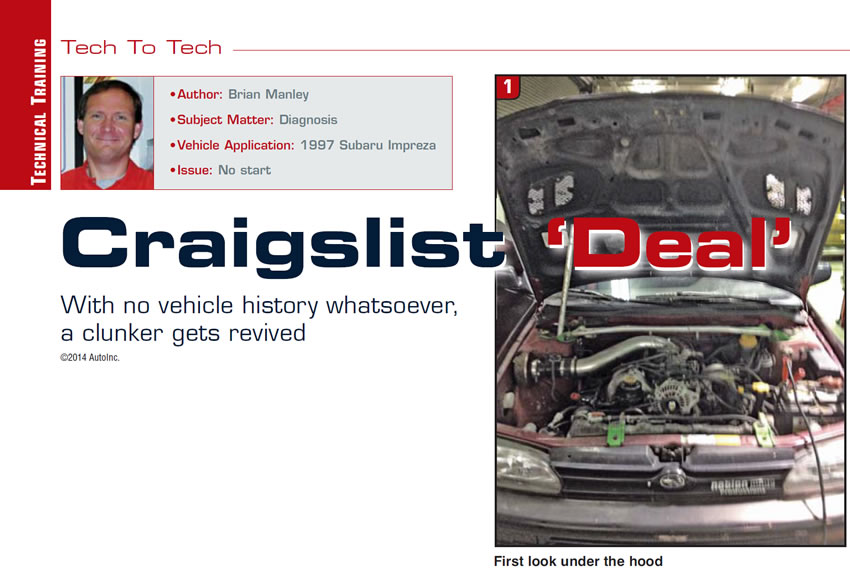
Tech to Tech
- Author: Brian Manley
- Subject Matter: Diagnosis
- Vehicle Application: 1997 Subaru Impreza
- Issue: No start
With no vehicle history whatsoever, a clunker gets revived
I recently had a customer begin our conversation with seven terrifying words: “I got this great deal on Craigslist!” I cringed a bit. How do you react to this situation?
So many scenarios ran through my mind that it was hard to decide which nightmare I was accepting the keys for. I must be adventurous. Or curious. Or just plain stupid, because I accepted the challenge.
For reasons I am still unclear of, my customer purchased a non-running 1997 Subaru Impreza for $1,500, and he had it towed to my shop. First impressions confirmed my suspicion that I was not the first person to work on this car (darn it!). The “Nationwide Productions” badge on the front grille, and the cold-air intake/K&N air filter combination (Figure 1) destroyed any hope that I’d have an unmolested car (darn it!).
Time to suck it up and dig in.
Secondhand information from my customer was that it “hadn’t been running for a while, and he thinks the engine is OK.” He knew this because the guy he bought it from said, “The engine only has 60,000 miles on it.” Terrific: A Craigslist car with a used engine.
Now I became quite concerned that this could be a true nightmare. With more than 140,000 miles, and no paper trail for past repairs, this was truly an unknown quantity. In situations like this, we sell 1.5 hours accompanied by the “digging a well” analogy. When digging into an unknown repair such as this no-start, it’s akin to digging a well, as one doesn’t know when the drill will hit water, much as we won’t know how deep we will have to dig until we have a running car.

We had to substitute a good battery for the marginal one under the hood before we could begin testing. Cranking the engine revealed that it sounded as though the timing belts had not jumped, although this would be at the top of the repair list for maintenance, should we discover that this car is worth investing in. Since these plugs come out easily – and there are only four of them – we tested compression, which was acceptable and even.
A quick test of spark and injector trigger revealed that both were present (Figure 2). Fuel-pressure testing showed no pressure, so we grabbed the engine-performance schematic and checked fuses and relays.
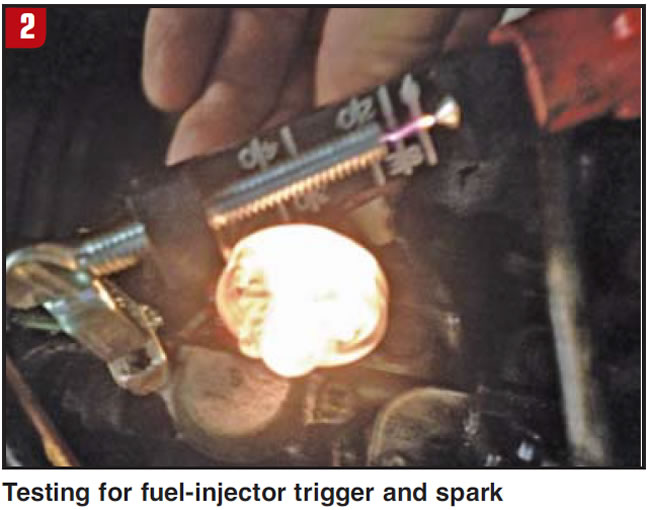
Available parts of the fuel-pump circuit were functioning, so testing took us to the back seat, where we popped out the bottom cushion for access to the fuel-pump module (I love Japanese cars for this reason). Our DVOM showed 11.2 volts while cranking, so it was time to pop off the hatch. That’s when I noticed someone had been in here before, as evidenced by two snapped-off bolts (Figure 3).
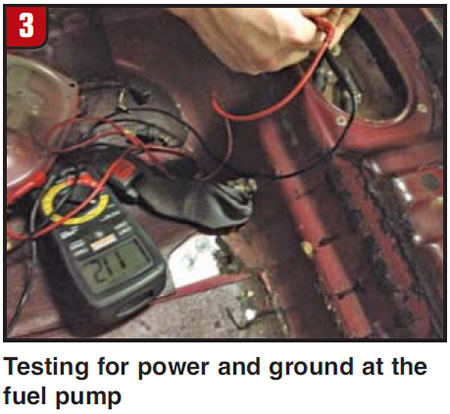
Once we removed the fuel-pump module, the root cause revealed itself immediately (Figure 4).
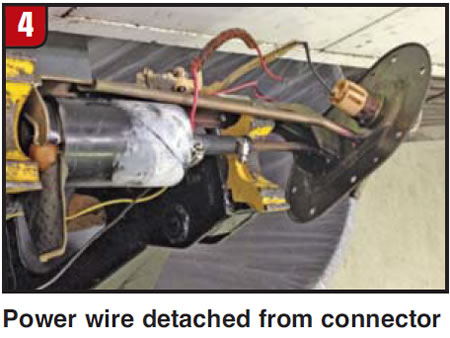
A closer view shows a dirty, frayed power wire detached from a gnarly, abused terminal connector (figures 5, 6 and 7).
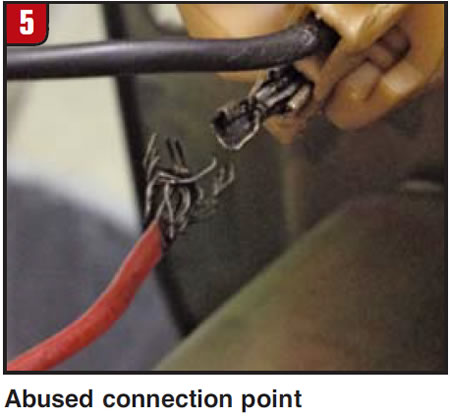
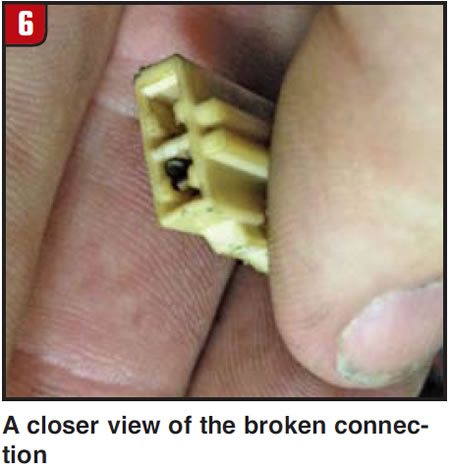
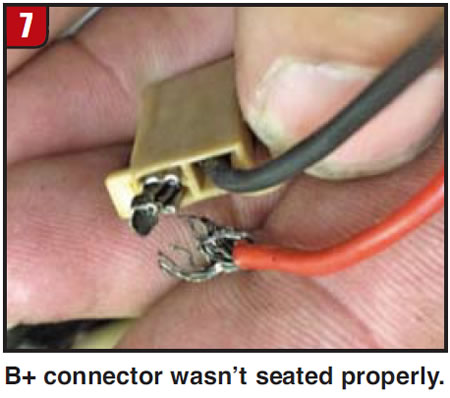
When I disconnected the connection point, I also saw that the terminal end was not seated properly (Figure 6), so even if the wire had been connected, there still would not have been power to our pump. How do things like this happen?
Once I removed the terminals, it was clear that someone had even been this deep into a “repair” in the past. The poor B+ terminal was mangled beyond recognition (Figure 8), but I was fortunate to have a fresh one in stock that fit the male terminal and even clicked nicely into the housing!
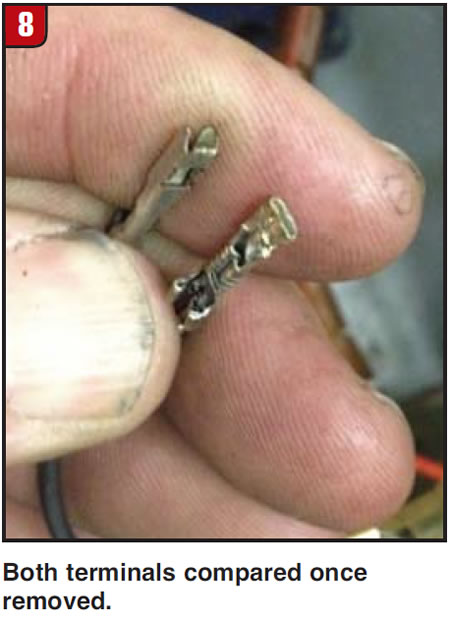
I also became aware – after seeing my fingers in Figure 8 – that I’m in dire need of a manicure!
Once it was repaired, we had a running Subaru – and I did not see smoke on startup, nor did I hear any scary engine sounds, so we ran it to operating temperature before calling our customer. I was waiting for the next “detached wire” scenario to pop up, imagining that at any second a connecting rod would begin to rattle and then blast through the hood.
So, that hurdle has been cleared, but what’s next?
With such an unknown quantity, what would you recommend for your customer?
After a quick used-vehicle inspection, we began with a quote for a timing-belt repair, front brakes, four tires, major fluid service, and diagnosis of the two trouble codes for O2-sensor heater and air-intake temperature sensor. We made our recommendations based on the current state of the vehicle, coupled with our experience with Subaru products.
Our customer wisely decided to “drive it for a while to see if it’s worth investing money in.” To date, my customer is driving this Subaru and I believe he is getting ready to bring it back in for some more work.
What “Craigslist adventures” have you experienced?

Brian Manley is a vocational automotive instructor for the Cherry Creek school district in Aurora, Colo. He is an ASE master certified automobile technician and a former member of the National Automotive Technicians Education Foundation (NATEF) board of trustees. You can reach him at [email protected].
This copyrighted article is reprinted with the permission of AutoInc., the official publication of the Automotive Service Association (ASA). To learn more about ASA and its commitment to independent automotive-service and repair professionals, visit www.ASAshop.org or call 800-272-7467.













